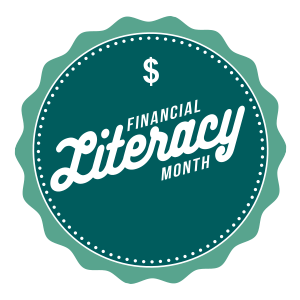

Over the next two decades, experts estimate a $68 trillion wealth transfer from baby boomers to younger generations. As the industry anticipates how heirs will use their inherited wealth, it revives a deeper conversation around racial wealth disparities between white families and Black and Latino families.
Seventy-six percent of millionaires in the United States are white, while 8% are Black and 7% are Latino — indicating a significant gap in the distribution of wealth and of opportunities to accumulate wealth.

So for historically marginalized communities, the first question is not "What will I do with my new wealth?" but rather "How do I accumulate it?"
The financial services industry has invested in helping individuals better understand how to access capital, and how to utilize it to grow, manage and transition wealth. By introducing this lens of financial education to youth in underserved communities, real progress can be made on leveling the economic playing field and closing the pervasive racial wealth gap. Tapping the capital markets and long-term investing are key differentiators between those who accumulate wealth and those who do not.
Educating Americans about how to participate in capital markets, build wealth and ensure their financial security requires an early start in life and meeting them where they are, literally. Young people on average spend six to eight hours per day in school, making it an excellent setting to introduce financial education. Yet only 17 states guarantee at least a semester-long personal finance course for high school students. How can we go further and empower these students to learn, apply and practice their financial skills?
A curriculum-based investing simulation is a proven resource used by schools and nonprofits to educate young people about capital markets in a language they understand. For example, the SIFMA Foundation’s Stock Market Game has been used by teachers to reach more than 20 million young people and is proven to raise students’ standardized test scores in math, economics and personal finance. Even more will have access to the same lessons on the importance of diversification and long-term investing from the comfort of their homes through a new, digitized investing experience, SMG InvestQuest. Starting at an early age, children are more likely to build the requisite budgeting and financial planning habits to set them up for long-term success.
However, education is only part of the solution to a much larger issue around the opportunity gap faced by underserved youth. Reducing barriers for capital markets participation makes a powerful difference, as we’ve seen with the financial sector’s advent of no-minimum accounts, no- and low-fee investing, fractional shares and 401K auto-enrollment programs. These have an impact on capital markets participation. Financial services firms are also well positioned to provide a workforce pipeline for young people to learn about careers in finance. Whether through internships, job shadowing, guest speaking or partnerships with schools and nonprofit groups, there is no shortage of opportunities for industry professionals to support and mentor students who otherwise would not have access to finance experts.
By creating opportunities for young people of all backgrounds to learn more about careers in finance, industry professionals build a more skilled, diverse workforce. The industry at large benefits from a more financially confident and capable generation can make informed financial decisions — leading to the ability of homeownership, credit score maintenance, higher credit scores, lower debt and sound investment allocations to help people secure a comfortable retirement.
So as we think about the greatest wealth transfer in U.S. history, we should take a good look at transferring wealth more efficiently for future generations. How can we connect with the underserved and historically underrepresented communities that are not getting access? If we want to close the wealth gap, we have to make sure it is accessible to everyone and that includes financial education early enough in life to seek out, understand and activate positive financial opportunities such as investing. To the extent we in the industry do it — and do it well — not only will this new generation build and transfer wealth successfully and more efficiently, but we can all play an active role in closing the racial wealth gap in the United States.
Melanie Mortimer is president of the SIFMA Foundation, which focuses on youth investor and financial education.

Relationships are key to our business but advisors are often slow to engage in specific activities designed to foster them.

Whichever path you go down, act now while you're still in control.

Pro-bitcoin professionals, however, say the cryptocurrency has ushered in change.

“LPL has evolved significantly over the last decade and still wants to scale up,” says one industry executive.

Survey findings from the Nationwide Retirement Institute offers pearls of planning wisdom from 60- to 65-year-olds, as well as insights into concerns.
Streamline your outreach with Aidentified's AI-driven solutions
This season’s market volatility: Positioning for rate relief, income growth and the AI rebound
